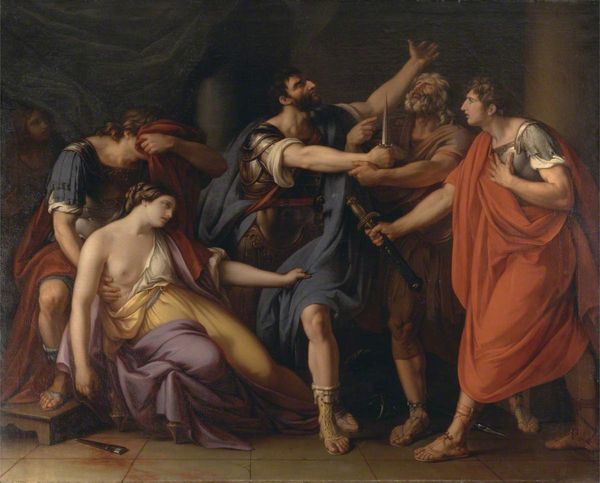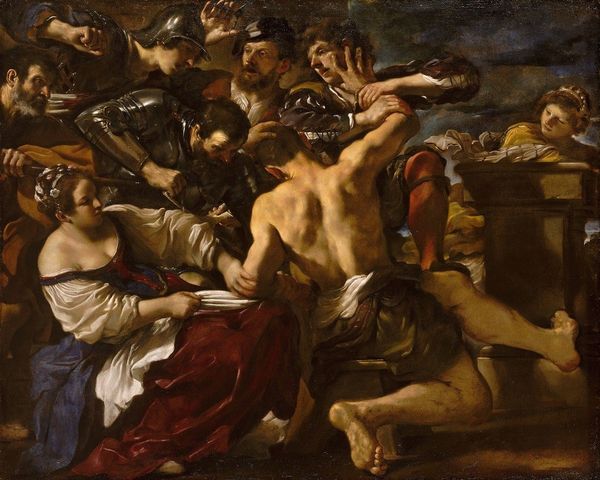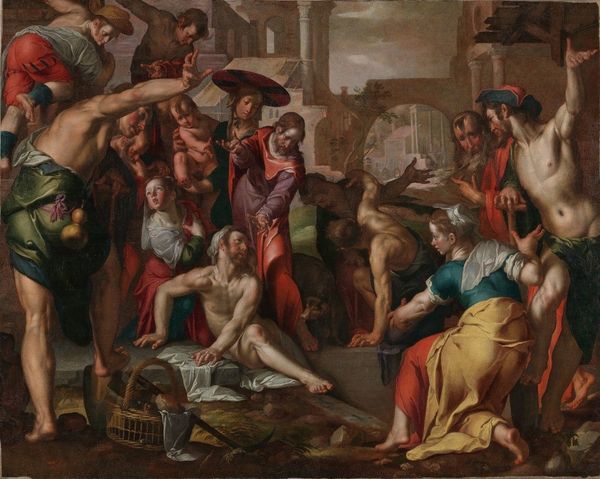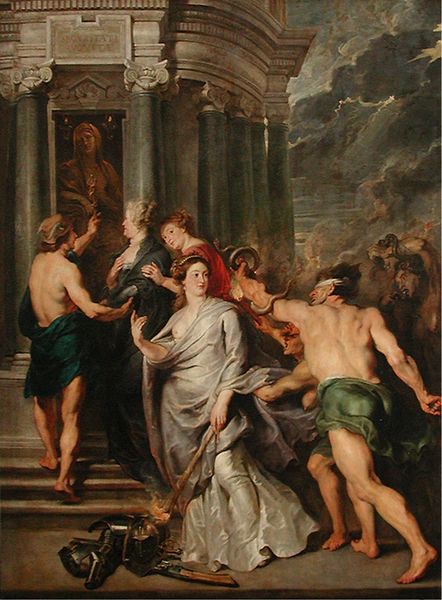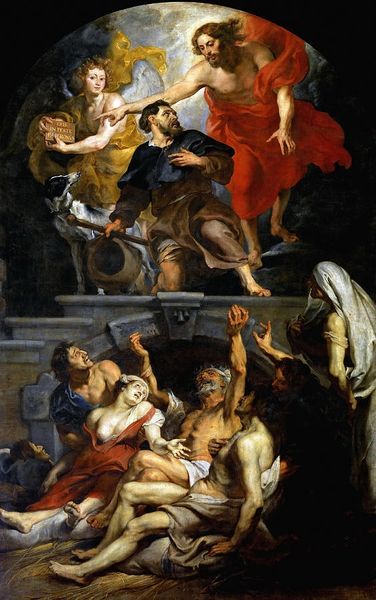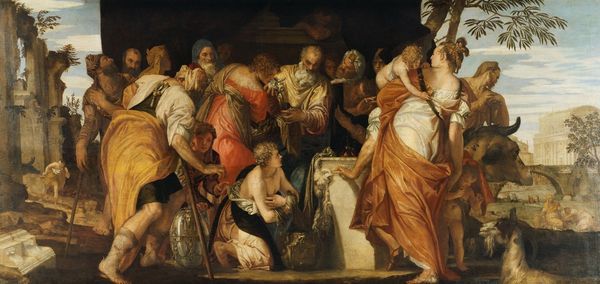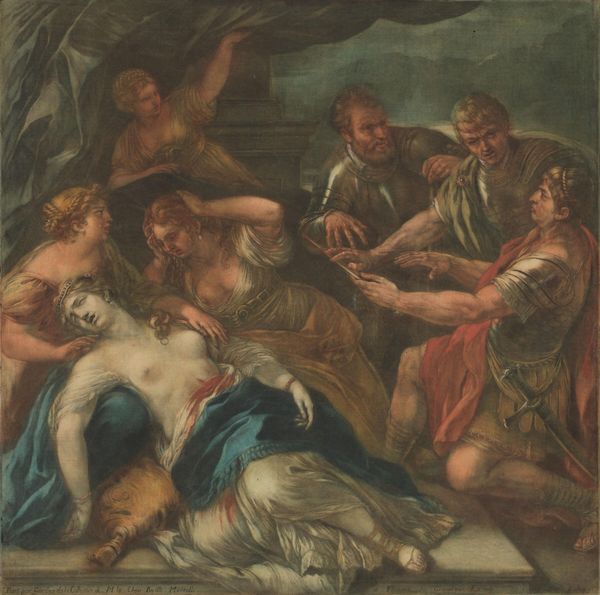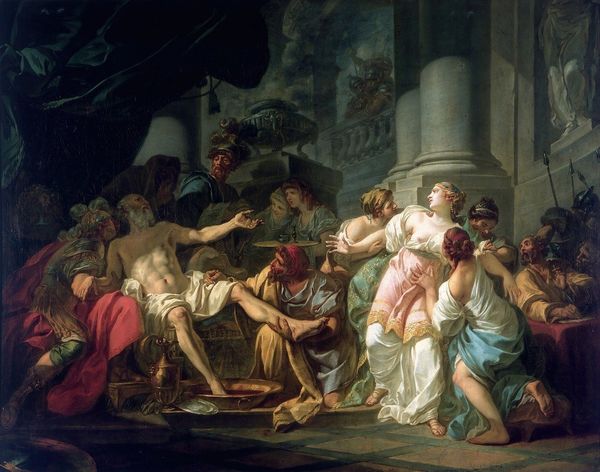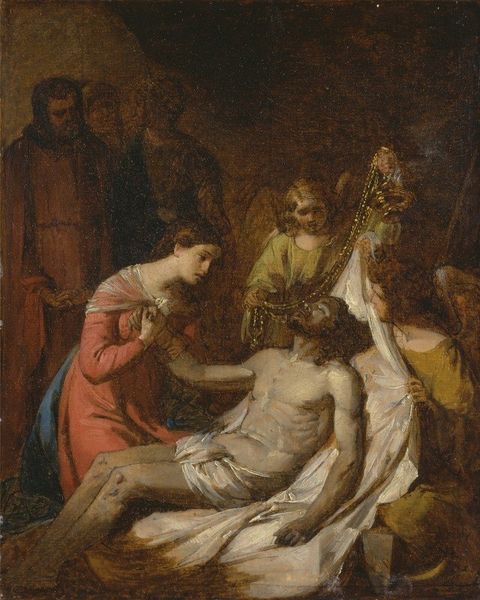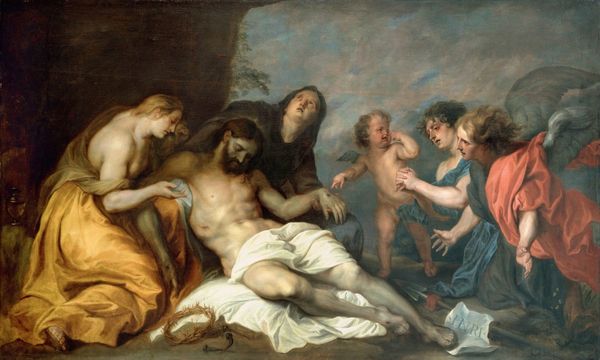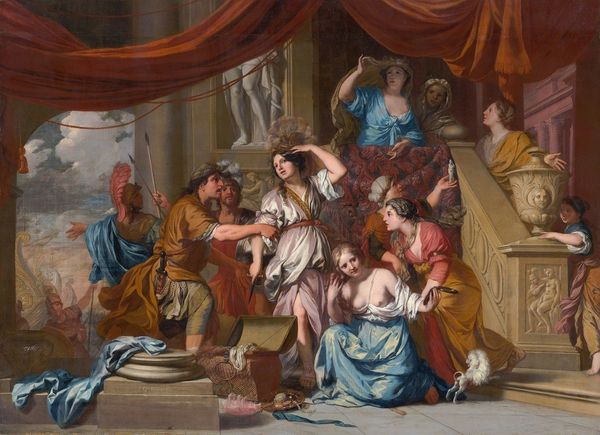
Copyright: Public Domain: Artvee
Editor: Here we have Alexandre Cabanel's "Jésus dans le prétoire," painted in 1845 using oil paint. The dramatic lighting and the expressions of the surrounding figures really strike me. What’s your take on this piece? Curator: This painting exemplifies the academic art of the mid-19th century. It presents a dramatic, yet carefully staged scene. Think about the sociopolitical context in which this was made; religious art served not only as devotion but also to reinforce particular power structures and moral narratives. What does this work say about the depiction of power and victimhood, given the subject matter? Editor: That's a fascinating angle. I guess it's trying to make a statement about injustice, maybe critique the powerful? Curator: Perhaps. But also consider *who* commissioned such works, and where they were displayed. Were they truly sites of radical critique, or rather, sophisticated endorsements of established orders? It’s worth noting the controlled brushwork and the idealization of Christ’s figure. These were conscious artistic choices aimed at eliciting specific emotional responses in the viewer. Academic art like this often presented a vision of the past, or in this case a biblical story, as a way of commenting on contemporary society, without necessarily challenging it outright. The art world operated within and alongside powerful institutions, wouldn't you say? Editor: That makes a lot of sense. I hadn't thought about it in terms of institutional power, just the emotions in the scene itself. Thanks for shedding light on the complex forces at play. Curator: Indeed, examining the history behind artworks can enrich the meaning we get from a single painting.
Comments
No comments
Be the first to comment and join the conversation on the ultimate creative platform.
